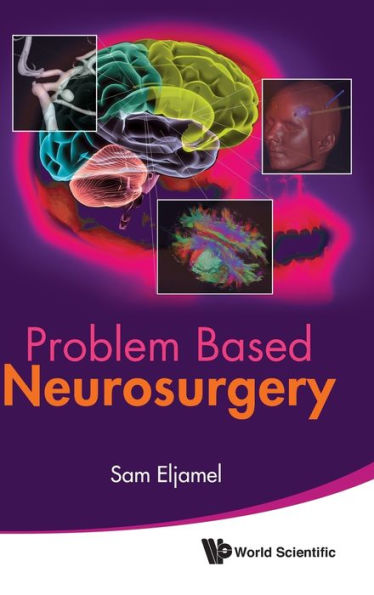Table of Contents
Preface xiii
Chapter 1 History and Physical Exam 1
Problem 1-1 How to get the patient to tell you what is wrong. (The smart way of taking a succinct complete history of any illness) 1
Problem 1-2 How to elicit neurological signs effectively, demonstrate them with confidence and make a lasting impression. (The smart way of performing neurological physical examination 1) 12
Problem 1-3 How to examine the first two cranial nerves efficiently, with confidence and make a lasting impression. (The smart way of performing neurological physical examination 2) 23
Problem 1-4 How to examine the third, fourth and sixth cranial nerves efficiently, with confidence and make a lasting impression. (The smart way of performing neurological physical examination 3) 32
Problem 1-5 How to examine the face (fifth and seventh cranial nerves) efficiently, with confidence and make a lasting impression. (The smart way of performing neurological physical examination 4) 45
Problem 1-6 How to examine the eighth, ninth & tenth cranial nerves efficiently, with confidence and make a lasting impression. (The smart way of performing neurological physical examination 5) 57
Problem 1-7 How to examine the 11th and 12th cranial nerves efficiently, with confidence and make a lasting impression. (The smart way of performing neurological physical examination 6) 69
Problem 1-8 How to examine the motor system efficiently, with confidence and make a lasting impression. (The smart way of performing neurological physical examination 7) 73
Problem 1-9 How to examine the sensory system, coordination and gait efficiently and make a lasting impression. (The smart way of performing neurological physical examination 8) 96
Chapter 2 Neurological Investigations 109
Problem 2-1 Computerised tomographic scan (CT): How to interpret CT-based images? 109
Problem 2-2 Magnetic resonance imaging (MRI): How to interpret MRI-based images? 120
Problem 2-3 Non-radiological neuro-investigations. How to interpret non-radiological neuro-investigations in a smart way? 134
Chapter 3 Trauma (Head and Spinal Injured Patients) 145
Problem 3-1 Head injuries and head trauma. How to manage a patient presenting with a head injury? 145
Problem 3-2 Spinal trauma and traumatic spinal cord syndromes. How to manage a patient following spinal trauma? 163
Chapter 4 Sudden Headache or Collapse (SAH, ICH, Seizures) 185
Problem 4-1 Sudden headache and subarachnoid haemorrhage. How to manage a patient presenting with sudden headache? 185
Problem 4-2 Collapse and sudden focal neurological deficits. How to manage a patient presenting with sudden focal neurological deficit or collapse? 209
Problem 4-3 Collapse, seizures, fits and funny turns. How to manage a patient presenting with seizure or funny turn? 220
Chapter 5 Raised ICP (Tumours, Abscess and Hydrocephalus) 233
Problem 5-1 Raised ICP and primary malignant brain tumours. How to manage a patient presenting with raised ICP due to primary malignant brain tumours (PMBT)? 233
Problem 5-2 Raised ICP and secondary brain tumours. How to manage a patient presenting with raised ICP due to secondary brain tumour (SBT)? 258
Problem 5-3 Raised ICP, brain abscess and CNS infections. How to manage a patient presenting with raised ICP due to CNS infection? 265
Problem 5-4 Raised ICP and hydrocephalus. How to manage a patient presenting with raised ICP due to hydrocephalus? 281
Chapter 6 Visual Symptoms (Meningiomas, Pituitary Adenomas) 307
Problem 6-1 Visual failure and intracranial meningiomas. How to manage a patient presenting with compressive optic neuropathy? 307
Problem 6-2 Visual symptoms and pituitary adenomas. How to manage a patient presenting with visual field defect? 324
Chapter 7 Hearing Loss, Ataxia, Vertigo and Facial Pain (CPA Lesions) 345
Problem 7-1 Hearing loss and cerebellopontine angle (CPA) lesions. How to manage a patient presenting with hearing loss? 345
Problem 7-2 Facial pain and trigeminal neuralgia. How to manage a patient presenting with facial pain? 356
Chapter 8 Tremor (Parkinson's Disease and Dystonia) 369
Problem 8-1 Tremor and Parkinson's disease. How to manage a patient presenting with tremor? 369
Problem 8-2 Movement disorders and dystonia. How to manage a patient with dystonia? 376
Chapter 9 Para-/Tetraparesis (Spinal Compression) 381
Problem 9-1 Bilateral limb paresis (malignant spinal compression). How to manage suspected malignant spinal compression? 381
Problem 9-2 Bilateral limb paresis (benign spinal compression). How to manage suspected benign spinal compression? 396
Problem 9-3 Bilateral limb paresis (spinal infections). How to manage suspected spinal infection? 410
Chapter 10 Pain, Weakness or Numbness in a Limb (Radiculopathy, Myelopathy and Peripheral Nerve Pathologies) 421
Problem 10-1 Brachalgia, myelopathy and cervical disc prolapse. How to manage a patient presenting with arm pain or myelopathy? 421
Problem 10-2 Sciatica, cauda equina and lumbar disc prolapse. How to manage a patient presenting with leg pain or cauda equina? 429
Problem 10-3 Hands and feet numbness and peripheral nerves. How to manage a patient presenting with hand or foot numbness? 443
Appendices 451
Index 473






